Riwaayat & Rukhsati: Your Comprehensive Guide to the Modern Pakistani Wedding
Curious about Pakistani weddings? Whether you’re desi, non-desi, or somewhere in between, this modern guide breaks down the traditions, events, outfits, etiquette, and fusion trends of Pakistani weddings in the U.S.—minus the history lecture.
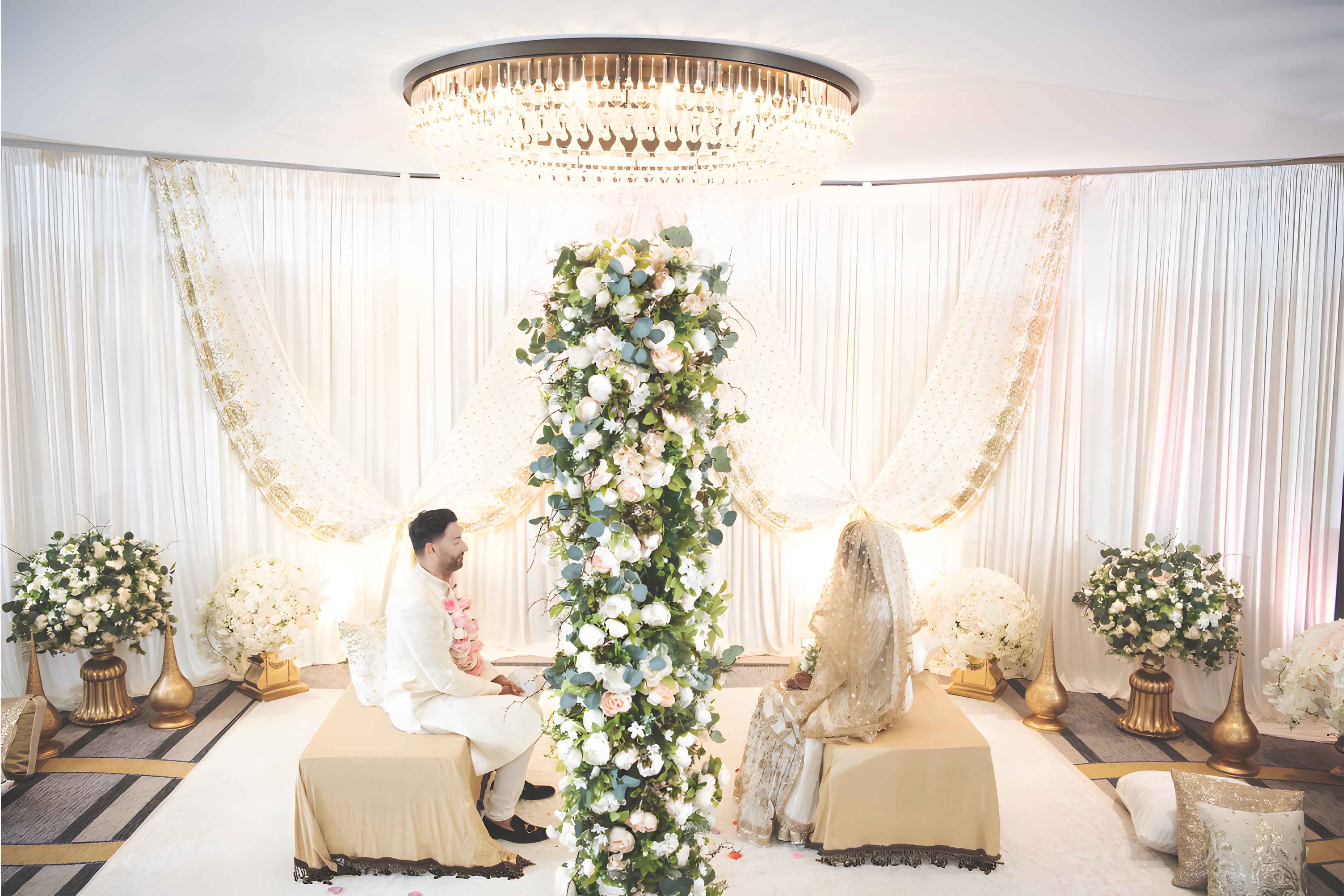
last updated: June 14th, 2025 | 9-minute read
Everyone says it that it's almost cliche at this point, so let’s get it out of the way: Pakistani weddings are not for the faint of heart. They’re vibrant, emotional, over-the-top, and deeply rooted in centuries of culture—and just when you think you’ve figured them out, someone’s nani will throw in a new ritual that wasn’t on the program.
But what actually counts as a “Pakistani wedding” these days? Spoiler alert: it’s not just Bollywood songs, jasmine garlands, or endless plates of biryani (though yes, those can all show up too).
Some weddings are five-day spectaculars with designer lehengas and drone cameras; others are intimate Nikkah ceremonies in a mosque basement with chai and mithai after. And both are valid, beautiful, and totally Pakistani.
Here’s where it gets trickier: Pakistan isn’t a monolith. You’ve got Sunni and Shia weddings, Punjabi and Pathan traditions, Sindhi vibes, Muhajir customs, and more. Some families lean traditional, others lean TikTok. And in the U.S., where timelines, budgets, and guest lists don’t always match up with back-home expectations, things get even more layered—think Nikkah on Zoom, baraat in a banquet hall, Walima with sliders and samosas.
So whether you’re Pakistani or just Pakistani-adjacent, this guide’s here to make sense of it all. Because not everyone grew up knowing what a Rukhsati is, why aunties bring tissues to the Nikkah, or what the difference is between a Mayun and a Mehendi.
And if you’re planning, attending, or working a Pakistani wedding in the U.S.—Laali.co has vendors who actually get it.
- Ch. 1 - The Build-Up: Pre-Wedding Events
- Ch. 2 - The Main Event—Ceremony, Chaos & Core Moments
- Ch. 3 - After the “I Do”—Walima & Post-Wedding Vibes
- Ch. 4 - Diversity Within Pakistani Weddings
- Ch. 5 - Guest Etiquette & Survival Tips
- Ch. 6 - Remixing Riwaayat—Pakistani Weddings in the U.S.
- FAQ Section
Chapter 1: The Build-Up—Pre-Wedding Events (aka The Real Party)
Let’s be honest: the main shaadi day is cute and all, but if you know, you know—the real chaos (and charm) starts way before that. Pakistani weddings don’t just happen overnight. They unfold in layers, like a really intense family group chat with no mute button. And depending on the family, the region, the budget—or let’s be real, the drama—you might get just a Nikkah, or you might get six back-to-back events, all with different dress codes, playlists, and uncles doing mic drops.
Proposal & Engagement (Mangni)
Not everyone does the whole rom-com proposal thing. Sometimes it’s a planned affair with parents present and chai being passed around like it’s a peace treaty. If there’s an engagement party (aka Mangni), it might be religiously neutral, culturally colorful, and full of future in-laws sneakily judging your outfit. It’s not mandatory, but it’s a nice “we see you, we claim you” moment for the couple.

Dholki Nights
Low-key, but high-energy. Think cousins, beats, clapping that doesn’t always follow rhythm, and aunties who suddenly become choreographers. Dholkis usually take place at someone’s house and are more “vibe” than production. Songs are sung (sometimes badly), secrets are spilled, and yes, there will be at least one dance to a 2003 Atif Aslam track.
Mayun
If there’s a Mayun, it usually happens a day or two before the mehendi. The bride traditionally wears yellow, is seated like royalty, and gets slathered with turmeric paste by laughing aunties who swear it’s “for the glow.” Spoiler: it stains. It’s sweet, sentimental, and deeply traditional—especially in Punjabi and Sindhi households.
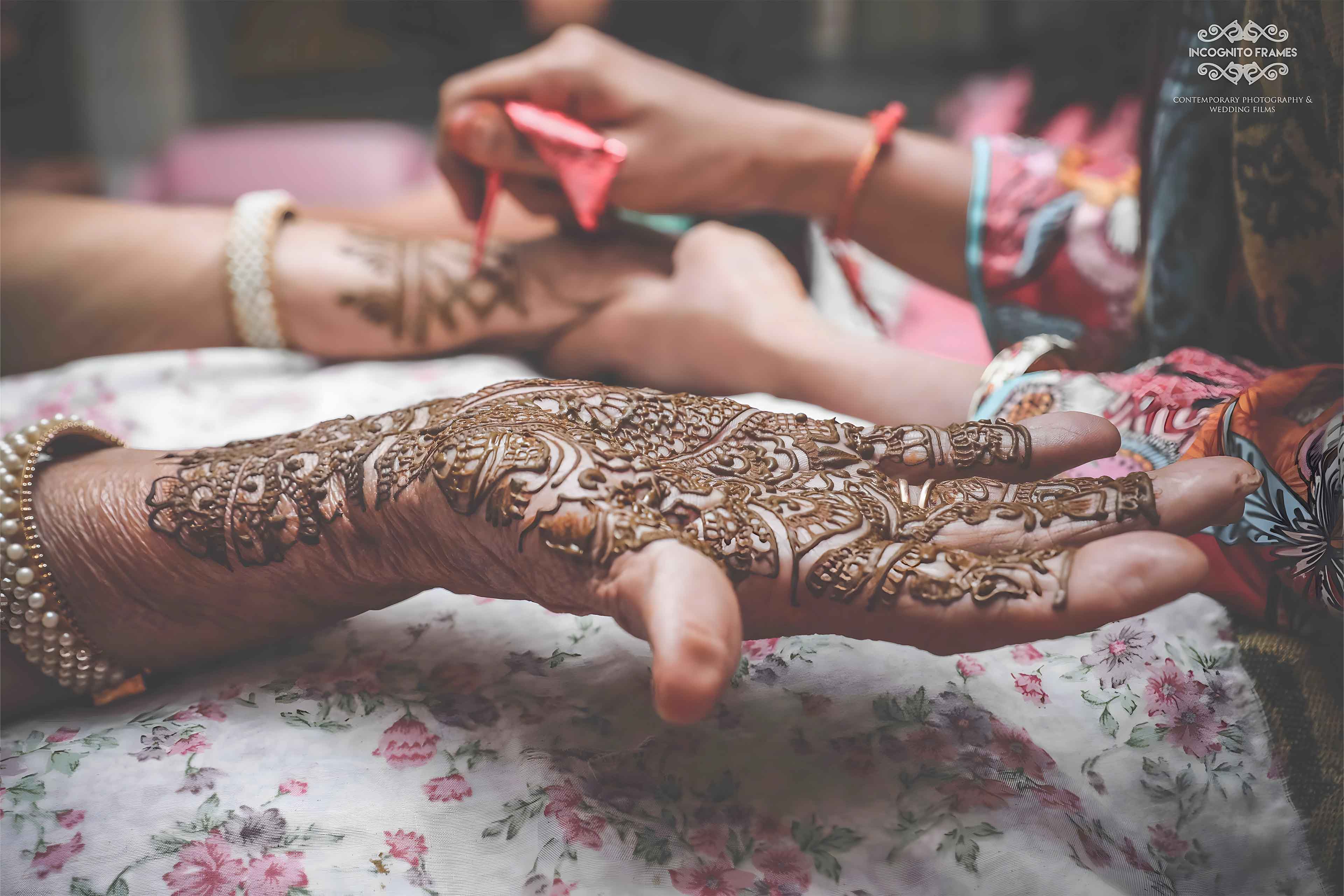
Mehendi
This is the showstopper for many modern weddings. Think color explosions, themed decor, group dance performances, and of course, actual mehendi being applied. Whether it’s a backyard vibe or a full-scale banquet hall production with a hashtag wall and LED dhol players—this is where fashion meets function. And yes, you will need a different lehenga than the one you wore to your cousin’s last mehendi. No repeats, bestie.
Nikkah Prep
The Nikkah—the official Islamic marriage contract—can happen on its own or folded into one of the events. If it’s separate, there might be a simpler setup with just close family, a local imam, and some very legal-sounding Arabic. If it’s part of the main day, you’ll see more glam, more guests, and potentially, more confusion about when to say “Qubool hai.” (Don’t worry, we cover that later.)
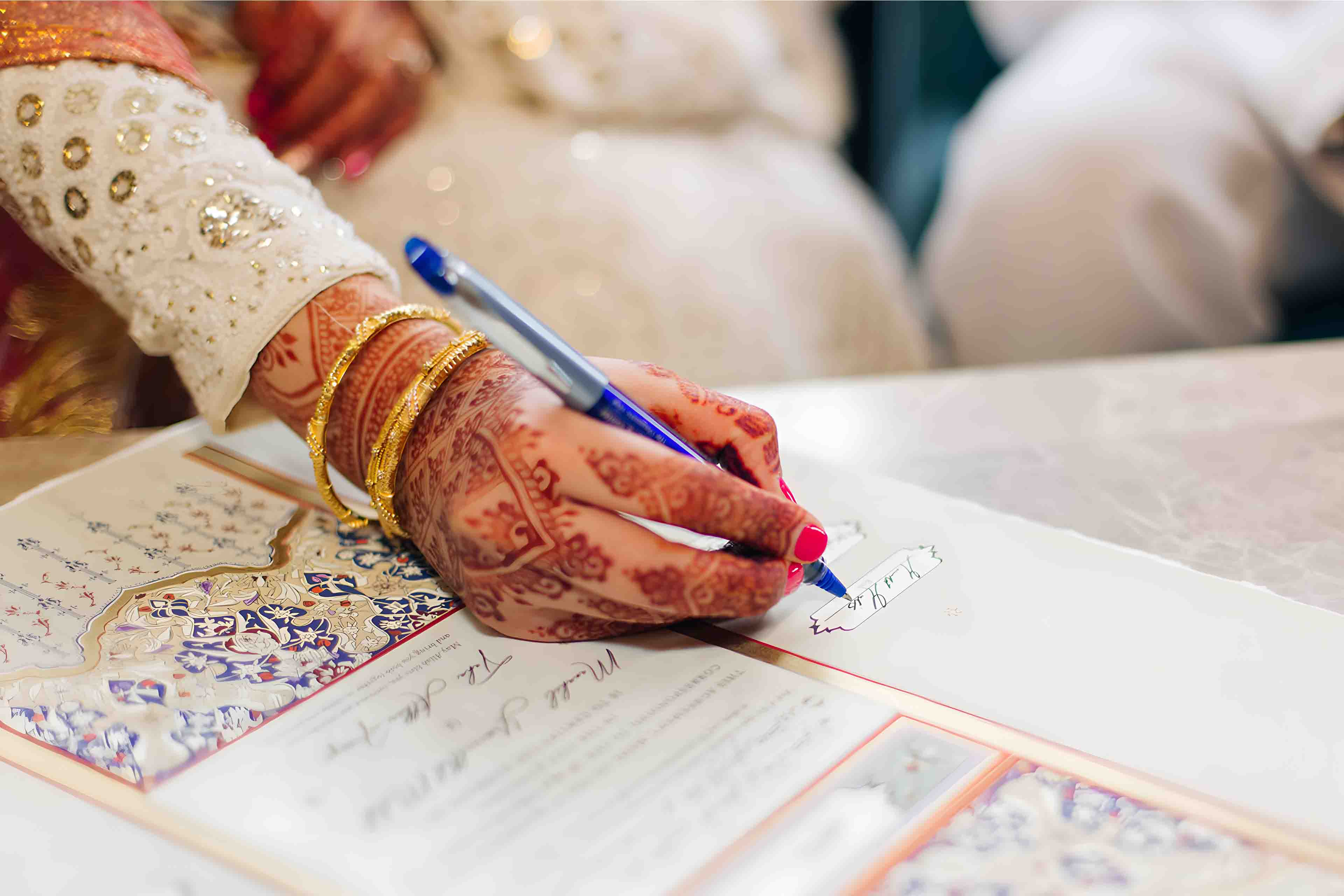
Chapter 2: The Main Event—Ceremony, Chaos & Core Moments
By now, your group chat has a spreadsheet, your mom’s bestie is stalking the caterer’s cousin, and the bride’s got three different makeup trials happening in one weekend. Welcome to the main event. Whether it’s a single Nikkah ceremony or a multi-day marathon with outfit changes and imported roses—this is when it all gets real (and real sparkly).
The Nikkah
This is where the wedding technically happens. The Nikkah is the Islamic marriage contract—a religious and legal ceremony that’s required in Muslim weddings. It’s usually officiated by an imam and includes a recitation of verses from the Quran, consent from both parties, and the signing of the actual marriage document. The couple says “Qubool hai” (I accept) three times, and boom—they’re married. No rings, no “you may kiss the bride,” but a lot of heartfelt duas and proud aunties wiping away mascara.
The Baraat
If the Nikkah is the soul of the wedding, the Baraat is the spectacle. It’s the groom’s official arrival to the wedding venue—usually with a whole posse of dancing friends, dhol players, and dramatic transportation (think: limos, vintage cars, or horses if you’re really going for it). The Baraat is peak energy, peak swag, and peak camera time. Whether it's in Karachi or Queens, the vibe is the same: we came to claim our bride, and we’re not doing it quietly.

The Rukhsati
This is the moment everyone pretends they’re fine but is absolutely not fine. The Rukhsati is the emotional send-off of the bride to her new home or life with her spouse. Traditionally, this comes at the end of the wedding day—after the ceremonies, after the food, after the photos—but before the aunties start critiquing the decor. Expect teary hugs, Quran recitations, and at least one cousin crying even harder than the bride. It’s tender, intense, and culturally significant in a way that transcends words.
Oh—and if you were comparing this to an Indian wedding, give up. There are no pheras, no mandap, and definitely no mangalsutra. It’s a different script, different traditions, and a different vibe altogether. If you’re curious about the Indian side of things, Laali’s got you covered here too.
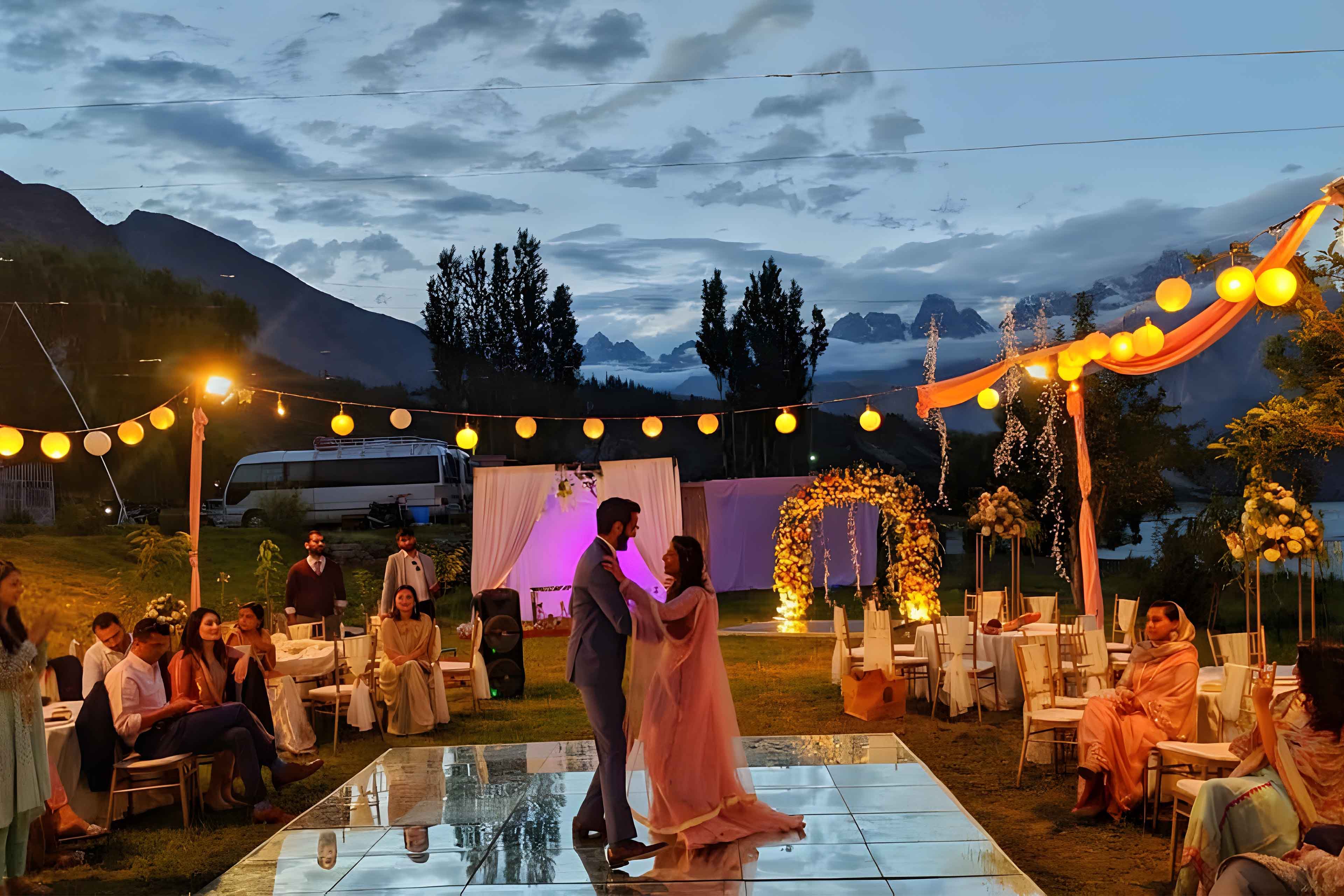
Chapter 3: After the “I Do”—Walima & Post-Wedding Vibes
Just when you thought it was over… surprise! There’s still one more major event left to survive (and maybe actually enjoy): the Walima. This is the groom’s reception, and while it’s technically less ritual and more celebration, don’t let that fool you—the stakes are still high.
What Even Is a Walima?
In Islamic tradition, the Walima is the groom’s way of publicly announcing the marriage and throwing a feast to celebrate it. It’s sunnah (recommended) in Islam, but in Pakistani culture, it’s also a full-blown affair—usually held a day or two after the main shaadi or Nikkah. While the bride’s side brings all the emotional heaviness of the Rukhsati, the Walima is the groom’s side stepping up to host, feed, and shine.
Traditional vs. Modern U.S.-Style Walimas
Back in the day, a Walima might have been a simple garden lunch or a modest dinner with relatives. These days? It’s often a formal evening reception with plated service, stage decor, a second round of outfit changes (yes, another lehenga), and enough chandeliers to make Versailles feel poor. In the U.S., many couples blend tradition with Western touches—expect slideshow montages, fusion playlists, and maybe even a wedding cake. Because if you’ve made it this far, you deserve cake.
The Food (Yes, It Gets Its Own Section)
If you ask anyone what they remember from a Pakistani wedding, there’s a 90% chance they’ll say the food. And at the Walima, the menu is usually peak indulgence. Biryani, seekh kebabs, mutton korma, haleem, and gulab jamun—it’s a literal feast. But with weddings evolving, so are the menus. Don’t be shocked if you spot a sushi platter next to the naan, or a chai cart parked next to a taco bar. This is the post-wedding glow-up in culinary form.
Oh—and if you’re a vendor, planner, or guest trying to navigate Pakistani wedding norms for the first time, just know this: if you can nail the Walima vibe, you’re basically halfway to being adopted by the family. And if you're still scouting vendors who get Pakistani weddings (read: no cultural guesswork, no awkward fusion fails), Laali.co has a whole lineup ready for you.
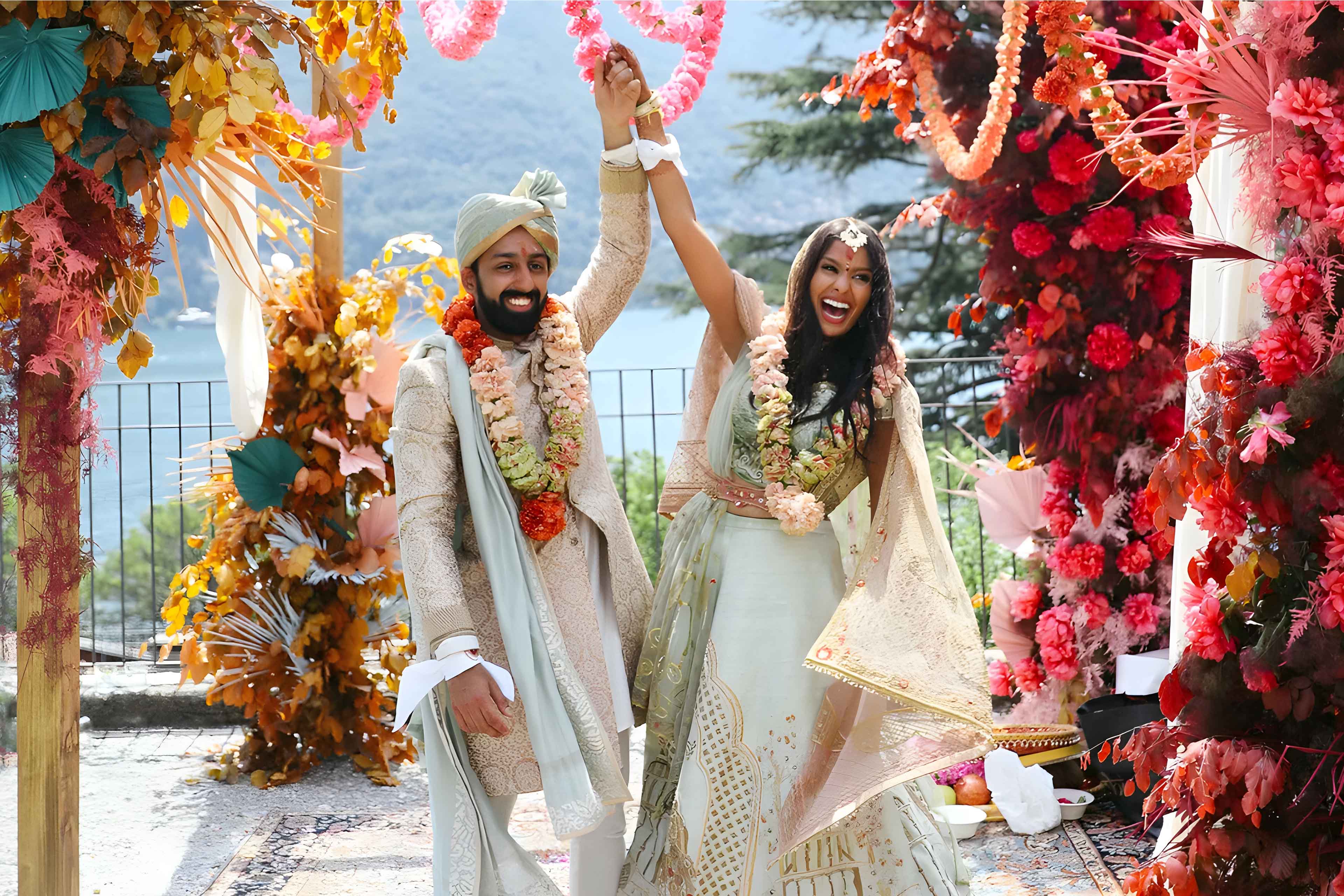
Chapter 4: Diversity Within Pakistani Weddings
Let’s get one thing straight: there’s no such thing as a “standard” Pakistani wedding. If you’ve seen one, you’ve seen... exactly one. And although the focus has mostly been on Islamic weddings, do not be fooled to think that's the only flavour that exists. The guest list might be 500 or 50. The bride might wear red, ivory, green—or hot pink because why not. And don’t even try to assume anything about the events unless you’ve been personally briefed by a mom, phuppo, and/or the bride herself.
When Cultures, Expectations & Aunties Collide
Behind every gorgeous wedding album is someone—usually a woman—silently navigating a minefield of opinions. Whether you’re the bride, sister of the groom, or the poor friend stuck planning it all, wedding prep in South Asian families isn’t just about color palettes. It’s emotional labor. It’s dodging unsolicited advice from five generations. It’s trying to balance tradition with actual sanity, especially if your background includes more than one cultural or religious identity.
And for millennial brides especially, the push-and-pull is real: being expected to honor tradition, manage budgets, appease relatives on both sides, and somehow not lose yourself in the chaos.
Sunni, Shia, Ahmadi, Ismaili & the Dozen Ways to be Muslim
Religion plays a major role—but like everything else, it’s not uniform. Sunni weddings often revolve around a traditional Nikkah followed by one or more celebratory events. Shia weddings might include a mutaqqib (a religious scholar) and a separate sermon. Ismaili ceremonies, meanwhile, are held in a Jamatkhana and often blend spiritual reflection with subtle elegance. Ahmadi weddings tend to be simpler in form but emphasize community and formal registry. No two are alike—but all are rooted in faith, family, and celebration.
Regional Flavors: Punjabi, Sindhi, Balochi, Pathan, Muhajir
Now enter the regional spice rack. A Punjabi wedding will likely include loud dhols, vibrant colors, and choreographed dances by cousins who think they invented Bollywood. Sindhi weddings may feature Ajrak prints, traditional rituals like Saanh, and distinct Sindhi wedding songs. Balochi customs are often more reserved, with tribal traditions and gender-separate gatherings. Pathan weddings center around hospitality and may include Attan dancing (yes, it’s as mesmerizing as it sounds). And Muhajir ceremonies often blend modern urban elegance with timeless Muslim traditions, especially in cities like Karachi.
Love Across Borders: Mixed-Faith & Fusion Weddings
Welcome to the remix generation. Pakistani weddings in the U.S. increasingly involve interfaith couples, multicultural families, or third-culture kids who are blending everything from Arabic vows to American DJ sets. Sometimes it’s a Nikkah and a church ceremony. Sometimes it’s a baraat followed by brunch. And sometimes it’s none of the above, because the couple makes their own rules. The only constant? Community, compromise, and a lot of clarifying conversations with your aunt who thinks “fusion” means you're disrespecting your roots.
Chapter 5: So You Got Invited… Now What? Guest Etiquette & Survival Tips
First of all, congrats—you made the guest list... which, depending on the guest list count, might not have been that exclusive to begin with anyways. But whether you’re a coworker, college friend, distant cousin, or plus-one, getting invited to a Pakistani wedding is a cultural deep-dive. It’s less black-tie, more full-glam; less stiff formality, more organized chaos. Here’s how to show up without sticking out (too much).
Let’s Talk Outfits
Yes, you should dress up. Yes, sequins are welcome. No, you don’t need to wear a sari if you don’t want to. Just skip anything too revealing or too casual. And if you want the full breakdown by event? We’ve got you—check out our dedicated outfit guide here.
Timing Is... Flexible
Here’s the thing: if the invite says 6 PM, the bride won’t show up until 9. But that doesn’t mean you should. Aim to be “gracefully late”—30–60 minutes after the stated time is usually safe. Too early and you’ll be helping aunties set up chairs. Too late and you’ll miss the food (and trust us, you want the food).
How to Greet, Gift & Behave
If you meet elders, greet them with a respectful “Assalamualaikum” and maybe a nod or handshake—skip the hugs unless they initiate. Speaking of: don’t ask the bride when the babies are coming, and don’t try to guess anyone’s ethnicity. As for gifts? Cash is common, gift cards are safe, and if you’re really close, something personal (but not too intimate) works. If you’re unsure, ask the couple—or wait for a registry link.
Dance Floor Rules
Yes, there’s dancing. No, it’s not always open to everyone right away. Sometimes the women get the floor first; sometimes it’s a mixed crowd from the start. Some weddings will have gender-separated seating or subtle boundaries (e.g. no slow dances, please). If you’re not Muslim, that’s okay—just be respectful. Read the room. If the bride’s dancing, you probably can too.
Shoes, Space & Spiritual Zones
If there's a prayer area (especially at the Nikkah), take off your shoes. Don’t step in if you’re unsure whether it's appropriate—just observe from the side. Be mindful of modesty and boundaries, especially if you're wearing something sleeveless or short. Most Pakistani families won’t say anything, but they will notice.
Chapter 6: Remixing Riwaayat—Pakistani Weddings in the U.S.
Planning a Pakistani wedding in the U.S. isn’t just a cultural exercise—it’s a logistical triathlon with extra glitter. From juggling auntie expectations to finding vendors who understand the difference between halwa and halal, Pakistani-American weddings are where tradition meets Taco Bell-level customization. Here’s what’s shifting—and what’s staying sacred.
The Evolution of Tradition (and the Auntie Feedback That Follows)
Pakistani weddings have always evolved—from Mughal-era nikaahs in courtyards to post-colonial banquet hall takeovers. In the U.S., that evolution has kicked into high gear. You’ll find couples rewriting timelines, blending ceremonies, and customizing rituals to reflect modern values (think gender-equal mehr agreements or co-hosted Walimas). But be warned: every deviation comes with a side of unsolicited WhatsApp auntie analysis.
Attire: The Lehengas Are Louder, The Shoes Are Sneakers
From bridal shararas with embroidered verses to custom Nikkah namas designed like heirlooms, U.S.-based Pakistani weddings are raising the bar on fashion and personalization. Grooms are ditching stiff sherwanis for tailored kurtas with velvet loafers, and brides are pairing couture lehengas with Air Force 1s by the time the dance floor opens. Tradition isn’t gone—it’s just accessorized with confidence.
Décor & Vibes: Less Throne, More Thought
The outdated wedding throne stage is (finally) getting dethroned. Enter: cozy floral Nikkah corners, minimalist backdrops, chai bar installations, and lighting that doesn’t look like a Bollywood set from 1997. Couples now prioritize mood over opulence—creating spaces that feel more like a moment and less like a museum exhibit.
Entertainment: From Qawwals to Spoken Word
The desi DJ still reigns—but he might be sharing the playlist with a qawwali troupe, a spoken word artist, or a cousin doing tappe with a side of ukulele. From live calligraphy stations to bridal entrances set to orchestral remixes of Coke Studio hits, entertainment now includes poetry, nostalgia, and just the right amount of dramatics.
Menus With Masala (and Matcha)
Yes, you’ll still get biryani, kebabs, gajar ka halwa and zarda. But now, they’re side-by-side with vegan pulao, sushi canapés, sweet rice shooters, and Indo-Pak sliders. Dessert walls are a thing. Chai carts are a movement. And if you haven’t tried halal beef brisket tacos at a Walima yet—you will.
Final Thoughts: Old-School, New Rules
If there’s one thing you should walk away with (besides maybe some leftover mithai), it’s this: there is no single way to have a Pakistani wedding. Not back home, not in the U.S., and definitely not in the age of Canva invites and budget spreadsheets.
Your shaadi doesn’t need to tick someone else’s boxes to be legit. It doesn’t need to be maximalist or minimalist, traditional or revolutionary. It just needs to feel real—to you, your partner, and your people. Take the rituals that speak to you, remix the ones that don’t, and remember that no one gets to gatekeep your culture, your values, or your love story.
Whether you're planning the whole thing, attending as a wide-eyed guest, or just trying to understand what on earth a Walima even is—thank you for caring. Understanding culture, especially your own, is always worth the effort.
And hey—if you need help figuring it all out (or just want to avoid hiring a decorator who thinks mehendi means mint green), Laali.co is here for you. We’ve got real wedding inspo, culturally competent vendors, and planning tools that won’t give you a migraine.
xoxo,
Laali Ladki
FAQ: You Asked, Laali Answered
Honestly? However many the aunties decide. Some families stick to a simple Nikkah + Walima weekend combo, while others go full Netflix mini-series with multiple Dholkis, Mayun, Mehendi, Baraat, and more. In the U.S., 3–4 events is a pretty common setup, but don’t be shocked if it turns into a five-day glamathon.
Short answer: it depends. Long answer: venue, guest count, designer outfits, food, photography, and how extra your family is all play a role. In the U.S., a modest wedding might cost $20K–$40K, while larger affairs can go well beyond $100K. Pro tip? Spend on what matters to you, not just what’ll look good on Instagram.
Bringing a gift is a kind gesture—but not a legal requirement. Cash is the go-to (crisp bills, please), though some couples may have a registry. If you’re super close to the couple, something personal or sentimental can work too. Just maybe skip the monogrammed bath towels unless you're sure they’ll love it.
Legally in Pakistan, it’s 18 for men and 16 for women—though that's been hotly debated and challenged in recent years. In the U.S., obviously, state laws apply. But culturally, most Pakistani families prefer waiting until mid-20s or later, especially for those raised abroad. TL;DR: no, no one’s marrying their cousin at 14.
Sometimes—but it’s not required in Islam. Many couples do a ring exchange either during the Nikkah or at the engagement (Mangni). It’s more cultural than religious, and the style varies—gold, diamonds, or even matching bands if the couple’s feeling matchy-matchy.
Mehr is an Islamic requirement—basically a gift or monetary amount the groom gives to the bride as part of the Nikkah contract. It’s her right and can be anything from a symbolic token to a significant amount. Dowry (jahez), on the other hand, is a cultural practice where the bride’s family provides gifts, often furniture or appliances. It’s not Islamic, it’s optional, and in many modern circles, actively discouraged. (Laali votes anti-dowry every time.)
First of all, welcome! You can absolutely dress up in traditional wear like a lehenga, shalwar kameez, or sari—but you don’t have to. Think colorful, formal, and modest. Just steer clear of all-white (too bridal), all-black (too somber), or anything too revealing. Need help styling your look? Our outfit guide’s got you covered.
Yes—but the definitions have evolved. Many modern Pakistani marriages are semi-arranged: introductions happen through family, friends, or apps, but the final choice is the couple’s. Consent is key, and forced marriages are not supported by Islamic law or most Pakistani families. It’s not Bridgerton with biryani.
Absolutely. Pakistani weddings are often big, inclusive community affairs. Just be respectful—especially during religious moments like Quran recitations or duaas. If there’s a prayer area, observe quietly or step aside. And if you’re unsure what to do? Follow the aunties—they know everything.
Right here, bestie. Laali.co has curated vendors who actually understand Pakistani wedding culture—whether you need halal catering, mehendi artists, or photographers who won’t miss the rukhsati tears.
Featured
Desi Weddings
Find Culturally Capable Vendors
You’re not just having a wedding, you’re having a South Asian wedding. From hosting multiple events to incorporating ancient traditions, there’s a lot that will make your wedding unique. With Laali, you can find vendors who get it and have experience making South Asian weddings spectacular!
Connect With Us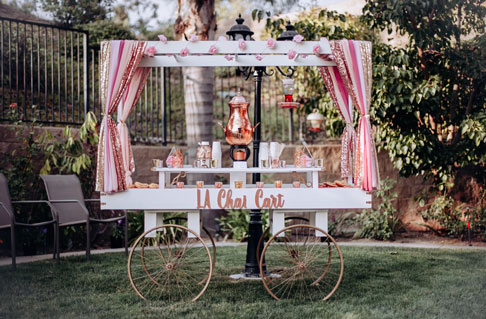

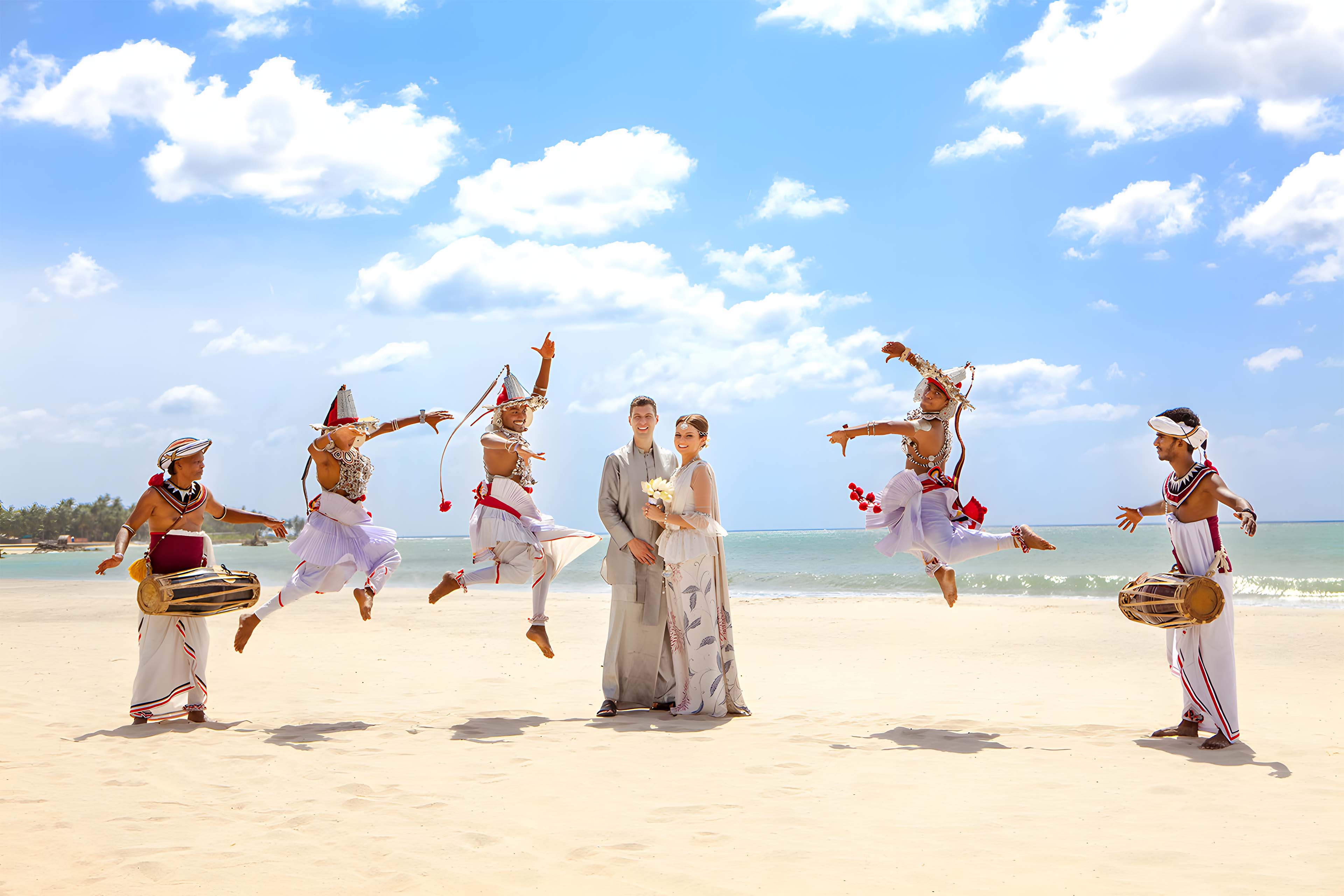
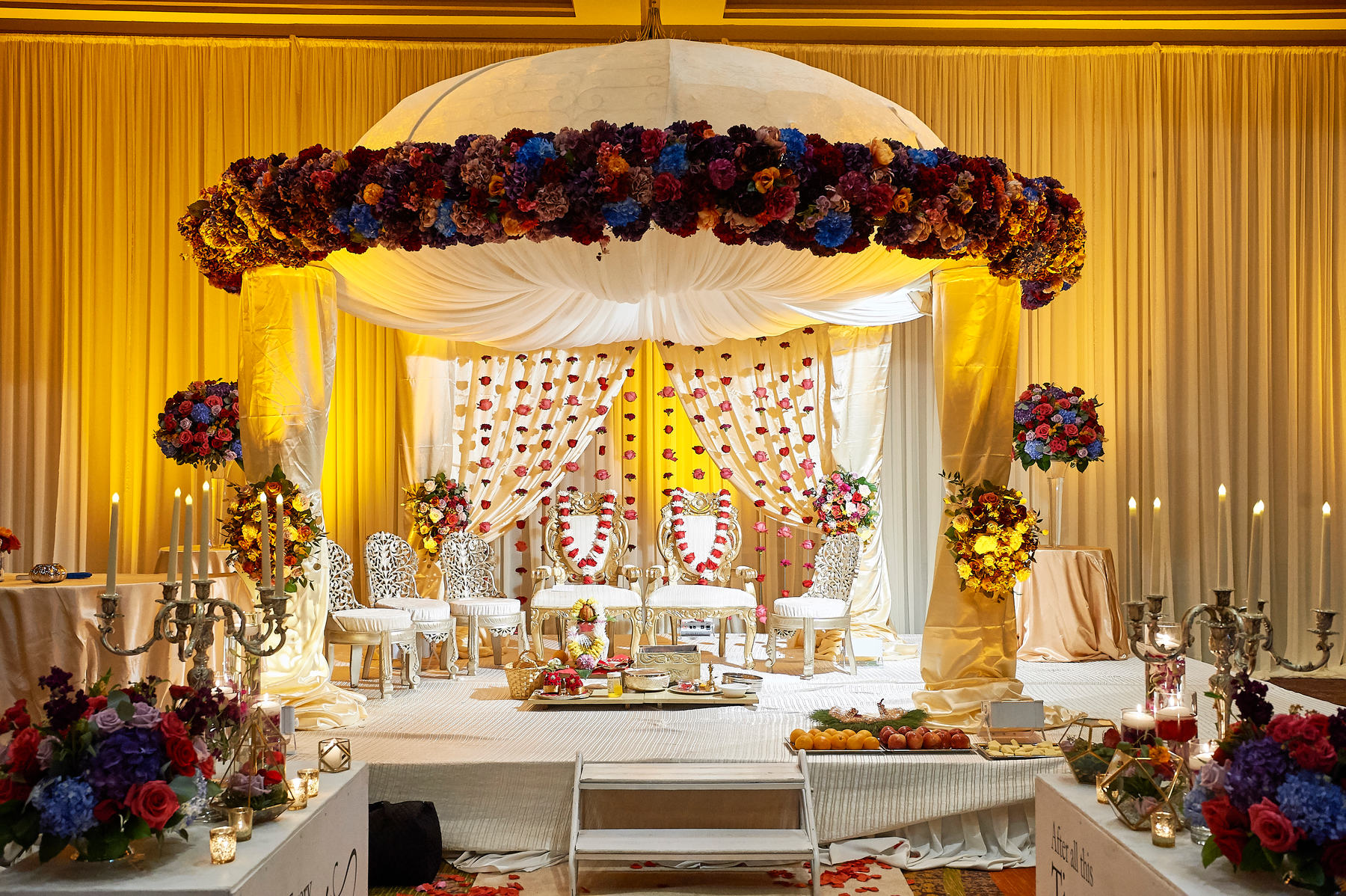
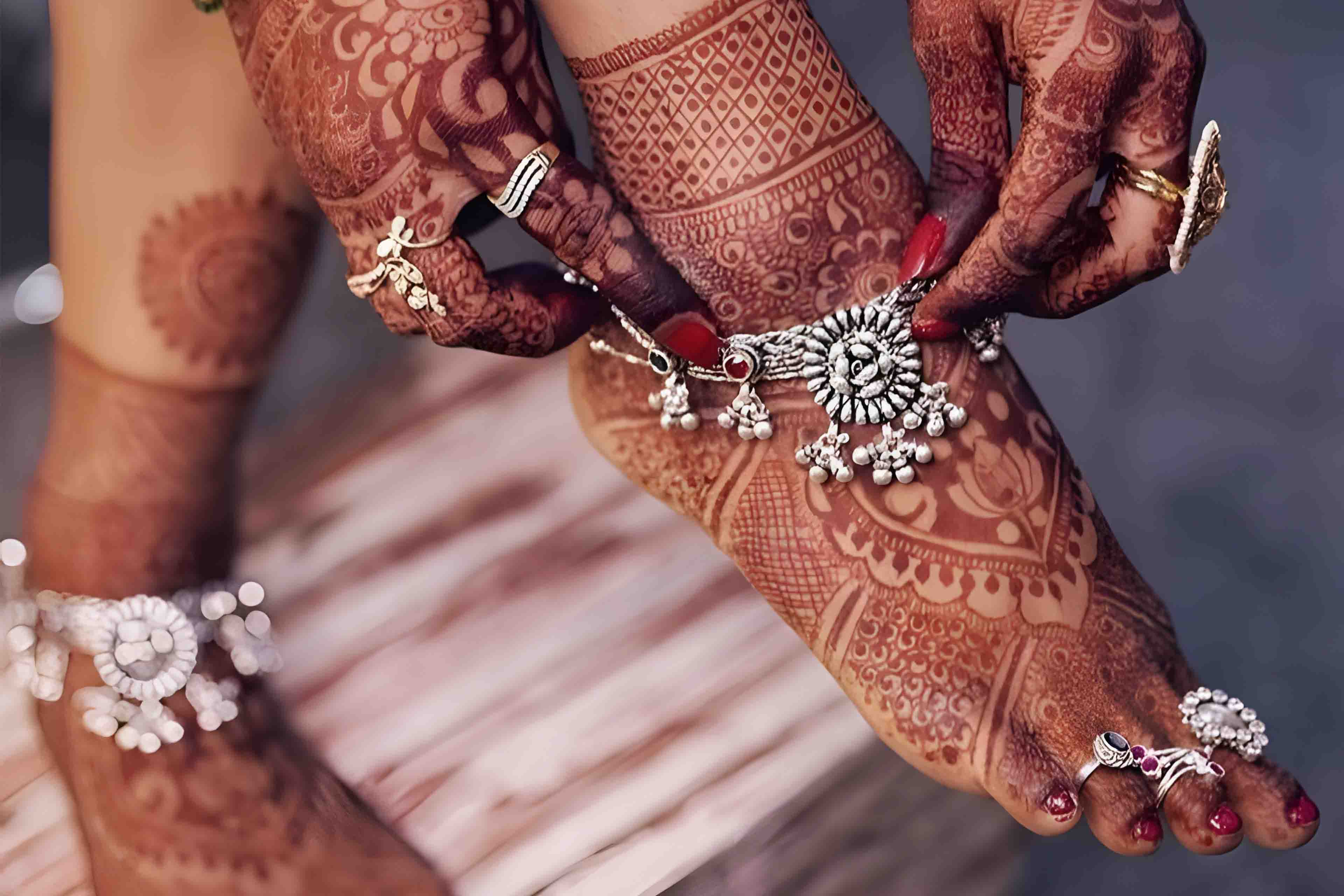
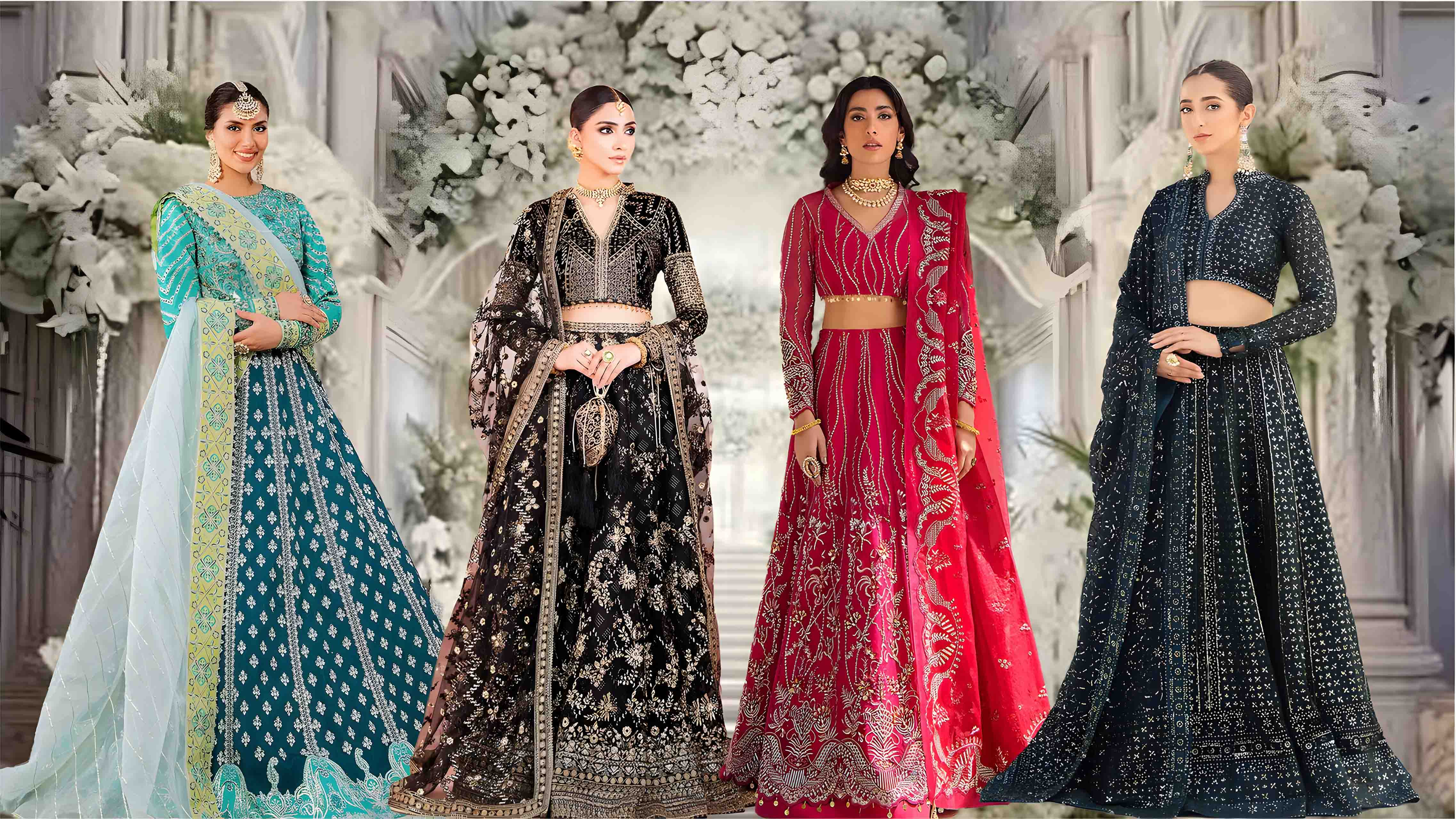
Comments (0)
No comments yet. Be the first to comment!